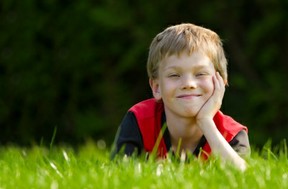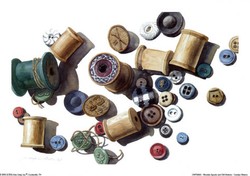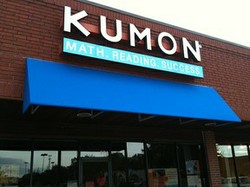
Comparing and Combining Sets in First Grade Math
Read how classroom games and computer games can help children practice addition facts, which will help them build a solid foundation for future math lessons.
 Around the age of seven, children are ready to begin comparing numbers and combining them in first grade math. This is the basis for understanding addition. Seven-year-old kids are still quite active learners and will respond best to concrete examples and manipulatives. The first step in learning to add is to compare two sets of objects and decide which set has more.
Around the age of seven, children are ready to begin comparing numbers and combining them in first grade math. This is the basis for understanding addition. Seven-year-old kids are still quite active learners and will respond best to concrete examples and manipulatives. The first step in learning to add is to compare two sets of objects and decide which set has more.
Children ready for first grade math have already learned that numerals represent a certain number of objects but might not connect that to comparison of sets. To help them realize the relationship between comparing objects and comparing numerals, begin by comparing sets of objects. While the sets are still visible, write on the board the numerals being represented, along with the comparison sign (< or >).
The comparison sign is used to indicate which set or numeral is larger in first grade math. Help children remember that the open side of the sign points to the larger number by showing them how it is like an alligator’s mouth. The alligator wants to eat the larger number of cookies, candies, oranges, apples, or whatever else is in the set.
Edible Math
Vary the way sets are presented to keep the children’s interest high. One way to do this is to use edible sets like pretzels, Cheerio’s, or raisins. Reserve this activity for one day in the week when kids are likely to feel restless, like Friday. Pair children and have them take turns presenting sets to each other. One child puts items into two circles. The other child turns the comparison sign in the correct direction. The child “wins” a snack with a correct answer.
Zoo Math
Create a tabletop zoo with cages made from construction paper and inexpensive zoo animal figures. Or use farm animals, cars, or any other object that will keep children interested. Change the figures weekly to keep attention high. Once children have mastered use of the comparison sign, add the equal sign. Make small cards with numerals 0 through 9 and have the children place the correct numeral and sign with each set.
Take the Next Step: Now How Many?
Go back to showing only one set. Ask how many objects are in the set. Add one more and ask how many are there now. Once children are used to “counting on”, show the problem with two sets of objects and a plus sign. When children have mastered this part of the problem, show two sets with a plus sign. Add the equal sign and the third set showing the total number of objects. Place the correct numerals over the sets.
Walking Math
Put a large circle on the floor. Invite three children into the circle. Then ask two more children to come to the circle. Ask the class if someone can show what happened by writing on the board. How many children were in the circle at first? How many more children came in? How many children are in the circle now?
Put on the board:

____ + ______=______ and ask who can put in the right numerals.
Using real objects to show how addition works will help children move from counting to comparing sets, and up to adding numerals. Begin with real objects when teaching first grade math and move on to the numerals and signs that represent the process. This will make it clearer that the problems represented on paper show a concrete process.
Practicing what has been learned by using games can help children move to abstract thinking more readily. Once they have the idea behind addition, the process of adding numerals makes more sense. It is time then to learn and practice addition facts. Games that utilize cards and computer games that show the process on a screen will help children to build fluency with addition and start laying the foundation for subtraction, the next big step in mathematical learning.
Best Shopping for First Grade Math
First Grade Math Lessons : Two Digit Addition for First Grade Math
DreamBox Learning First Grade Math Game
You might also like
Buttons from the Rag Bag! Button Jar Math ActivitiesSave the buttons from discarded clothing and recycle them as fun, hands-on ma...
Kumon Math ReviewA mother's review of the Kumon Math program including suggestions for kumon a...






 Visual Learning Strategies: What to Look For in Math Learning Platformson 04/20/2012
Visual Learning Strategies: What to Look For in Math Learning Platformson 04/20/2012
 Blended Learning in the Elementary School Classroomon 04/18/2012
Blended Learning in the Elementary School Classroomon 04/18/2012
 Graphic Design Programs: Five Things You Didn't Knowon 03/27/2012
Graphic Design Programs: Five Things You Didn't Knowon 03/27/2012
 The Best-Kept Secrets of College Education: Community Colleges to Financial Aidon 03/27/2012
The Best-Kept Secrets of College Education: Community Colleges to Financial Aidon 03/27/2012



Comments: What do you think about implementing 1st grade math games?
Thank you! I agree, engagement is crucial, especially at this age ;) Thanks for stopping by @sheilamarie
I like how you've included real objects and movement to present mathematical process. So many children get turned off math just because it feels frustrating and confusing for them. Letting them know that math is something they've been doing all along and letting them get involved with their own bodies and playfulness will help them get excited to use the numbers and signs.